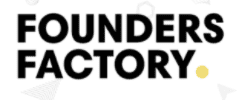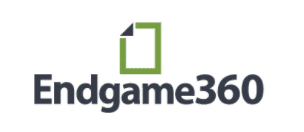Top Virtual Onboarding Tips from Leading Digital-First Companies
How do you onboard new staff, when there is no one in the office?
How do you get them set up for their first day – let alone for continued success, while maintaining social distancing?
How do you ensure they have a WOW experience and spark critical human connection when there is no in-person interaction?
This was one of the first challenges we at Enboarder had to tackle. A week after shutting the office and heading home, we had a new starter beginning (you can watch how we tackled virtual onboarding here!).
We put the word out to seasoned experts who have been onboarding virtually for years to find out their key tips, advice and the challenges to watch out for.


Tip 1: Stagger Your Compliance
“Compliance is probably one of the most boring parts of the onboarding process already,” says Jenn Perry, Onboarding Logistics Manager at Shopify.
“But something that we have always done, and being that part of our workforce is already remote, we really tweaked the process so that everybody gets that same experience. For us, we make sure that these [compliance] pieces are completed before their first day.”
“New hires get access to our HRM software before they start, so they can get sort of those important pieces out of the way. As well, our IT team makes sure all our new hires have their equipment and accounts set up for day one.
“The idea is that when they start, they can really get into our startup program, where they’re going to really go through our company culture and values and everything like that, and they don’t have to really worry about those compliant pieces. They come in, they already know what their job is, and what tools they need to do their job well.”
Tip 2: Connect People with Similar Interests
“For us, culture at Shopify is super important. We’re actually known for our startup culture, even though we’ve grown well beyond a startup.”
“For us, it’s things like trying to find that balance of fun ways that we can connect together. So it could be things like, we have teams that do Cribs episodes together, optional Netflix parties after hours. We have a very active Animal Crossing channel on Slack. So, just getting everybody involved and letting them know in the beginning that there are fun things you can do, you can sort of mix your day up a little bit. And you’re probably going to find a large group of people who have similar interests to you.”
Watch Out For: Logistical Challenges!
“International logistics is a challenge for us. For example, we’ve run into some countries where they’re not even accepting deliveries right now. So we’re working with how can we still get that new hire started on day one if we’re not able to get them a laptop? If we’re not able to get them their swag, and all the great things that we want to send them before they get started?
“That’s definitely been a big challenge, as well as putting that all together. And then looking at the fact that we’re now shipping out a much larger quantity of equipment than we ever did previously.
“We’ve really been having to look at it at an individual basis. I think we’ve only actually had it happen once so far where somebody literally couldn’t get their equipment before they started. Our IT team has been working around the clock to work out other ways that they might be able to get equipment whether it is things like seeing if there is somebody else in that country that does work for us that might be able to go out and buy one locally, rather than us shipping.


Tip: Make Asynchronous Steps Synchronous
“Synchronous means it has to happen in time together with two people. Asynchronous means it’s done self-serve, on your own time,” explains Talent Coach Akbar Karenga.
“For example, a typical asynchronous thing is compliance. You don’t need to be live while somebody’s signing a contract. But what is synchronous is that lovely first lunch that they have with their hiring manager. So one of the things that we’ve employed is, we’ve got a Pleo account and say, “order lunch to your house and your hiring manager is going to do the same. And you have lunch together sometime in your first week.”
Watch Out For: Saying Goodbye to the Old Ways
“I would say the initial challenge is if you’re transitioning from a business that was traditionally face-to-face, to virtual, there are certain things that are going to be new, certain things that are going to break, and that’s an uncomfortable initial realization. Remember in the beginning it’s going to be a work in progress, just learn as quickly as you can. It is a strong thing that a lot of businesses that I’ve seen in my startup portfolio have initially started having trouble with.


Tip: Create Opportunities for Human Connection
“We do a lot of all company chats and we have different Slack channels, and ways for people to talk to people with the same interests,” says Tanya Dutra, VP of People Operations.
“So if somebody wants to read books or go running, they can find other people in the company with that similar interest.”
“Connection really starts with the hiring process. We let the managers take the lead, that way they can start forming those relationships. And then, we try to get them to connect with current staff members as quickly as possible once they get in.
“We introduce them to the team and let them start being a part of their team calls, right from day one. We encourage managers to have weekly meetings with all new hires and we also provide them with performance reviews, as well. So that way they know the areas that they’re winning and it also reinforces the culture of feedback we like to have.”
Watch Out For: The Adjustment to Remote Work
“One challenge with a remote company is sometimes a new hire may not realize the difficulty that they might have in adjusting to working remotely. Sometimes they miss the social aspects and structure of going to a physical work office. So we support that by providing them structure or helping them structure their day, with a start/end time, and helping them determine their workflow during the day. And then also, outside of the current conditions, we would encourage them to go to a co-working space or work at a café or a library or something like that.”